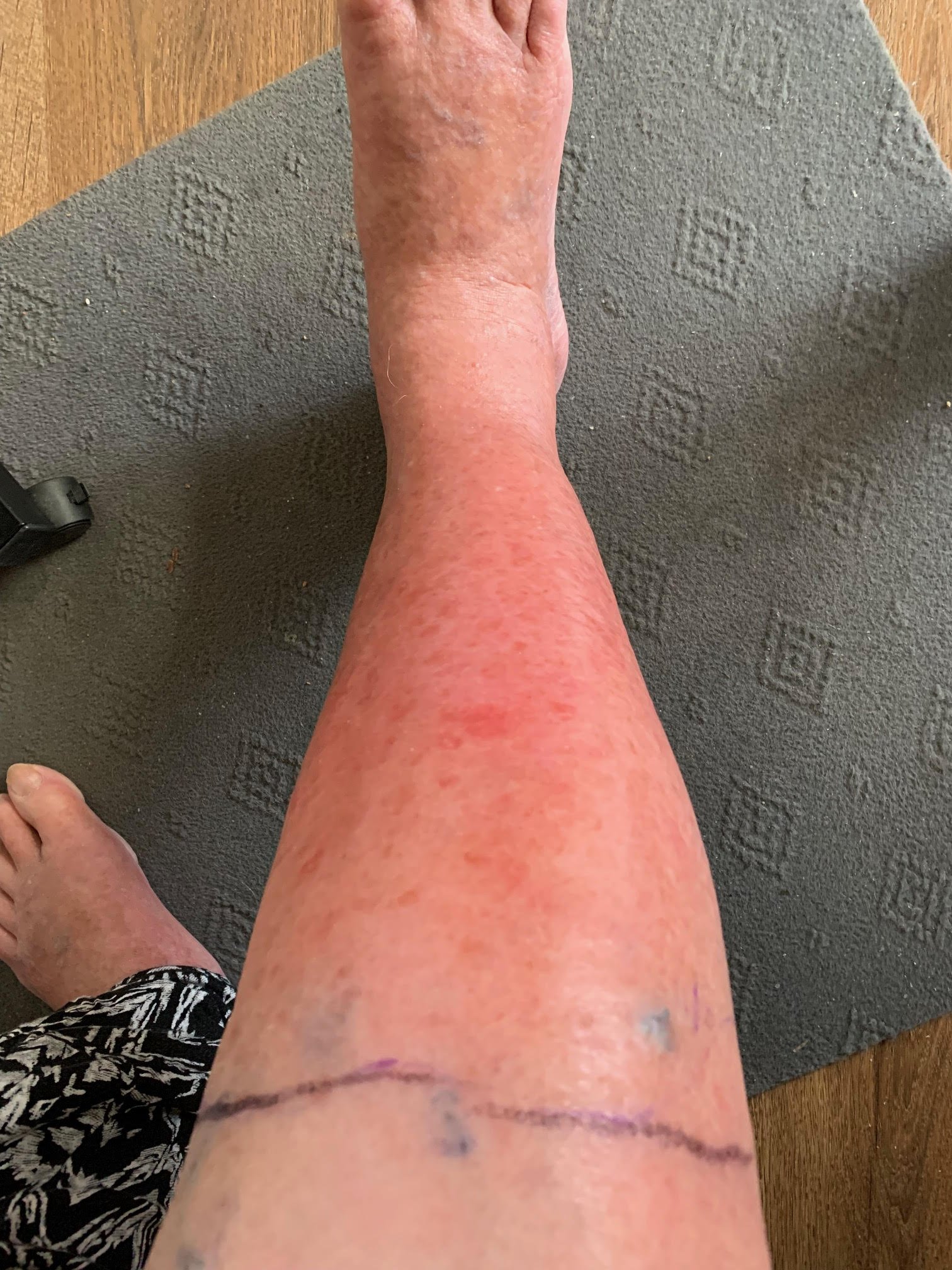Cellulitis
22/6/24Dr Aoife McGarvey
Cellulitis is an infection of the skin and tissues that lie just beneath it, and it typically occurs in the legs. It is the leading cause of potentially preventable hospital admissions in Australia. Treatment includes anti-biotic medication to treat the infection.
Risk factors for cellulitis are:
Lymphoedema. This is the highest risk factor for cellulitis.
Skin breakdown and skin that is dry or fragile. This facilitates bacterial invasion of skin layers.
Circulation conditions such as venous insufficiency.
Immunity defects which impair defence mechanisms against bacteria.
Obesity.
A recent Guideline for Cellulitis Review was presented at this year’s Australasian Lymphology Conference by Janette Jacks (University of Sydney). Sixteen publications were included in the review with 15 out of the 16 focusing on management of swelling (oedema). No papers explored the effect of managing skin integrity or tinea. The authors concluded that the strongest recommendation for non-pharmaceutical management and prevention of cellulitis is:
Management of oedema/swelling, especially by using compression.
Those affected by cellulitis need assessment by a qualified Lymphoedema Practitioner to measure and prescribe suitable compression, to not only manage the associated swelling, but to reduce risk of cellulitis in future.
Chronic oedema increases risk of cellulitis by:
Impaired immune defence to pathogens.
Impairs skin integrity, susceptibility to entry of bacteria via skin.
Recommendations to prevent Cellulitis are detailed in the Australasian Lymphology Association “CONSENSUS GUIDELINE: MANAGEMENT OF CELLULITIS IN LYMPHOEDEMA” (Approved by the ALA Council June 2008; reviewed June 2010 March 2012, March 2015)
The non-pharmacological management includes:
Education
What cellulitis is and what to do if you have acute cellulitis (see a Doctor).
Signs and symptoms of cellulitis – redness, warmth, may be febrile/have a temperature.
How to reduce individual risk.
Healthy Skin
Healthy, intact skin optimises the natural barrier function of the skin which prevents bacteria entering. Skincare includes:
Regular moisturising with emollients.
Preventing cuts, scratches, wounds, insect bites.
Reducing bacteria by:
Wash with Chlorhexidine 4% total body wash 2x/week for 4 weeks,then
weekly for 4 months.
Bactroban nasal gel 10 nights.
Wash bed linen in hot water and dry in sun.
Disposable sponges/single use face washers.
Fungal infections
Contagious. Detrimental to skin integrity eg. Tinea pedis. Mx:
Lamisil (terbafine) cream daily for 2 weeks.
Dry toes after bathing.
Clean between toes with alcohol wipes.
Regular washing of shoes and socks.
Compression
Once the acute cellulitis has settled and wearing compression is tolerable for the skin. Compression needs to be prescribed by a qualified Lymphoedema Practitioner.


